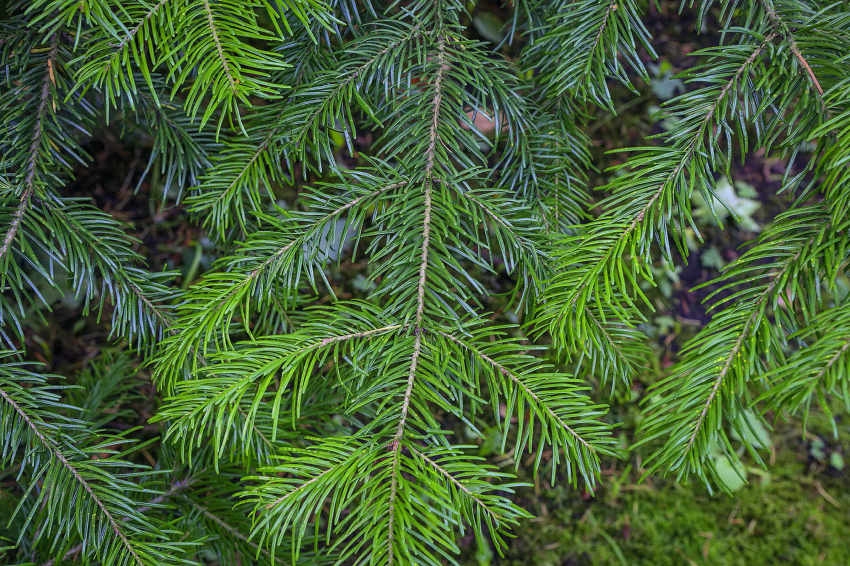RED BOOK: KGZ09 Nyldy Key Biodiversity Area
Species that initiated the designation of KBAs [and other globally threatened species that are present in the KBAs but have not been confirmed to meet the global KBA criteria]: Plants: Allium dasyphyllum, Kosopoljanskia turkestanica, (Neuroloma pulvinatum, Tulipa talassica, [Betula tianschanica].
Dasophyllous onion (Allium dasyphyllum)
Dasophyllous onion (lat. Allium dasyphyllum) is a perennial herbaceous plant, a species of Onion (Allium) genus in Alliaceous family (Alliaceae).
Distribution. In nature, the species range covers the Tien Shan. Grows on rocky slopes in the upper belt of mountains.
Botanic description.
Bulb is ovoid or spherical-ovate, 0,75-1,5 cm in diameter; shells are blackish and paperlike. Stem is 15-35 cm high, ribbed due to protruding veins, rough due to short hairs.
Leaf is solitary, 2-5 mm wide, linear, rough due to short hairs, much shorter than the stem.
Cover is slightly or one and a half times shorter than the umbrella and is shortly pointed. Umbelle is fascicular and hemispherical or simply hemispherical, multiflorous and thick. Pedicels one and a half to two times as long as the perianth, even, without bracteas at the base. Tepals are white, with a green, strong vein, linear and lancet, sharp, bent down later, twisted and 4 mm long. Filaments of the stamens are only slightly longer than the tepals, connated with perianth at the base, adnated into a ring above each other and subulate. Ovary is on a short peduncle and is rough.
The pod is almost spherical, with a diameter of 4-5 mm.
Source of image:
Turkestan Kozopolianskia (Kosopoljanskia turkestanica)
Status: VU. One of two endemic species of this genus, growing in Kyrgyzstan.
Description. Perennial plant, tap (rachis-like) root, cylindrical, the neck is shrouded in brown scales, the remains of dead radical leaves. Stems are solitary, or 2-3 in number, branching from the very base, bare, glaucous, 40-60 cm in height. Leaves are mainly radical, short and petiolular, their blades are oblong in outline, doubly pinnatisected, primary lobes are linear, the lobes are spathulate, and stem leaves with a diminished blade, with sheaths. Umbrellas 10 - 18 - flowered, umbels 15-flowered, with wrap and involucel. Flowers of lateral umbels are often sterile. Fruit are ovoid, octahedral, by ripening break up into 2 semi-fruit, bare.
Biology peculiarities. Blossoms VI, bears fruit VII.
General distribution and distribution in the country. It was found in the upper reaches of the Talas River, in the Ortok-Too and Uch-Bulak mountains, on the Alai Range (the Ak-Buura river valley) and in the Inner Tien Shan (the Dzhumgal river valley near the conflux with the Kokomeren River) in Kyrgyzstan.
Vegetation area. On dry shale rockslides, stony fine-earth and conglomerate slopes, on variegated salt-bearing clays.
Numberedness. There is no information available.
Limiting factors. It is possible that mature fruit are washed away by rainwater and fall into unfavorable conditions - in hot foothills and valleys.
Cultivation. There is no available information.
Existing protection measures. Listed in the Red Data Book of the USSR (1978); Red Book of the Kazakh SSR (1981); Red Data Book of the Kirghiz SSR (1985).
Recommended protection measures. Establishment of botanical reserves in the gorges, with the highest concentration of population. Finding new locations.
Source: Red Data Book of the Kyrgyz Republic. The 2nd edition - Bishkek, 2007.
Herbarium photo source:
Pillow Parrya (Neuroloma pulvinatum)
Botanic description of the genus. Parrya (lat. Parrya) is a genus of herbaceous plants of the Cabbage family (Brassicaceae), or cruciferous (Cruciferae).
It is perennial herbaceous plants. Leaves are whole or pinnatipartite. Flower arrow is often leafless.
Sepals are spaced, lateral at the base and often saccular. Petals are large, with a long unguis, purple or white. Filaments of stamens are free, without teeth or crevices. There are short stamens, one is annular with outwardly open honey gland around the base. Ovary is sessile. Column is short. Stigma is bilobed. Fruit is an oblong or linear pod flattened from the back; valves flat, with clear median vein, reticulate-veined. Seeds are two-row or one-row, flat, winged or wingless. Cotyledons are flat; marginal germ.
Vegetation area: Grows on rocks, rocky slopes and passes in the upper belt of mountains.
Interesting facts: The genus is named after William Edward Parry (1790-1855), English explorer of the Arctic.
Parryas are ornamental perennial herbaceous plants that form thick carpet tufts of numerous dense rosettes of leaves, decorated with abundant showy flowers. It is used as an unpretentious ground cover plant, as well as for rocky hills. It is cultivated since the end of the 19th century. 4 species are used in ornamental gardening. It is not commonly distributed.
Photo source:
Talas Tulip (Tulipa talassica)
Belongs to Lily family (Liliaceae)
Brief description. Bulbs are ovoid, 1,5-2,0 cm in diameter, with leather-like, black, rather strongly extended, downy shells at the top. Stem is 10-35 cm long, bare. There are 3 leaves, bare, bluish, spaced, the upper ones are linear and lancet, the lower ones are wider, lancet. Single flower is upright in bud. Tepals are 2,5-4,0 cm long, yellow, reddish on the outside. Stamens are 2-3 times shorter than the perianth. Anthers are yellow.
Phenology. Blooms in in April, fruiting in June.
Ecology. It grows on rocky habitats, at altitudes of 900-2000 m above sea level. Distribution is in in the Kyrgyz and Talas ranges in Kyrgyzstan.
General distribution. Endemic.
Cultivation. There is no available data.
Designation. Rare ornamental plant.
Protection in Kyrgyzstan. No protection measures were undertaken.
Sources of information: Lazkov, Pashinina (2011). Lazkov G.A.,
Source of photo:
Umralina A.R. Endemics and rare plant species of Kyrgyzstan (Atlas) - FAO. Ankara, 2015.
Tien Shan Birch (Betula tianschanica) Кызыл кайын
Spreading: Species range covers Central Asia - Kyrgyzstan, Tajikistan and China (Xinjiang Uygur Autonomous Region) in nature.
Botanic description:
Tree is 2-4 m tall, with pinkish bark.
Young twigs are reddish-brown, bare or slightly pubescent and are covered with resinous warts in addition.
External signs of leaves: leaves are simple; petiolate articulation.
Leaves are ovate or narrowly ovate, almost rhomboid-oval, 4 cm long, 2,5 cm wide, pointed, with a broadly wedge-shaped base, bare, entire, coarsely irregularly serrated along the edge, 1 cm long on petioles.
Differences of shoots: leaf arrangement on the shoot is alternate; placement of leaves along the stem length.
Flowers: perianth is inconspicuous; catkin (amentum) inflorescence.
Pistillate catkins are straight, 1,8 cm long, 0,7 cm in diameter, on slightly downy legs 3-4 mm long. Bracts are about 5,5 mm long, only slightly ciliated along the edge, the middle lobe is linear, lateral ones are ascending, rounded, much shorter than the middle lobe.
Fruit: dry type; coloring is with shades of red; dry winged (key); wing appendages; coloring is with shades of yellow; dry nutlet.
Nutlet is ovoid, 2 mm long, slightly downy at the base of column. Wings equal in width to a nutlet or slightly narrower.
Ecology: It lives distantly or in small groups on mountain slopes and river valleys, at altitudes of 1600-2200 m. Blooms in May.
Growing in culture. As for cultivated plantings, it is found in Alma-Ata city only. Can be recommended for afforestation of mountain slopes in the fight against soil erosion.
Source of information:
Source of image:
http://fungi.su/images/photoalbum/album_53/55196_4c0eaa90.jpg
http://fungi.su/images/photoalbum/album_62/75263_9b1bcf62.jpg















